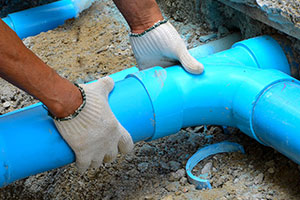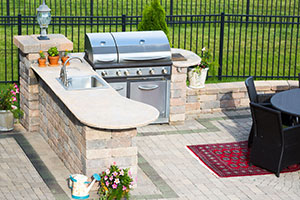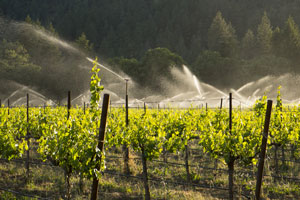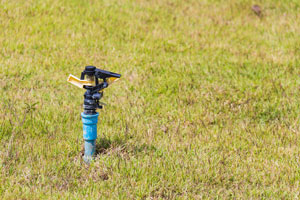Solve drainage problems and meet water runoff requirements at your business by trying out these helpful tips.

Controlling runoff at businesses can become a challenge if you don’t use the correct drainage and piping solutions. In addition, uncontrolled runoff from construction sites can negatively impact nearby rivers, lakes, and estuaries. Failing to properly control runoff can also result in the formation of stagnant water, growth of bacteria, and obstruction to traffic or pedestrian areas. To avoid these challenges, we have gathered together a few tips that will help you to meet requirements for controlling water runoff at your local business.
Control Business Landscaping Water Runoff
It is no secret that business lawn and landscape maintenance requires the use of large amounts of water. With this in mind, it is all too easy to forget to adjust watering systems in the presence of heavy rainfalls or drought-like conditions. In the former, excessive watering can lead to heavy runoffs; while the latter can cause fast-flowing water runoff due to the ground’s inability to properly absorb the water. To combat these challenges and to meet water runoff requirements try the following landscaping tips:
- Group plants together based on their watering needs.
- Schedule lawn irrigation for the early morning hours to reduce water waste.
- Install a drainage system to direct the water into the appropriate areas.
- Use low-precipitation-rate sprinklers to more evenly distribute water and prevent runoff.
Business Drainage Best Practices
To help direct the water to where it needs to go, without causing excessive runoff scenarios, you should make sure that your soil is properly drained. Proper grading can reduce excessive runoff and erosion and attaching pipes to the building’s gutters can better direct the flow of natural water. Keep in mind that there are specific regulations regarding what water can be directed towards the sewer systems. Make sure that you are up-to-date on your local government’s regulations, before you implement a drainage system that relies on the sewer network. Additionally, water runoff should never be directed towards the street. If you notice that the water is draining towards the street, try adding a water collection mechanism, such as a Flo-Well to your business’ gutters.
Meeting Requirements for Business Water Runoff
Understanding the regulations surrounding land use and waste disposal practices for businesses that are near water supply sources is essential when you are planning how to handle water runoff at your business. Contamination of a water source can result from point and non-point sources of pollution such as improper use and runoff of insecticides and herbicides. To avoid these contaminating instances, try using Flo-Wells to contain as much of the water onsite as possible.
To learn more about how to meet the runoff requirements for your business, we invite you to contact us today! W. P. Law, Inc. proudly carries a complete line of drainage and piping materials that are designed to solve almost every drainage problem. From catch basins and channel drains to handle excess surface water to flo-wells W. P. Law, Inc. has the drainage solution for you.











